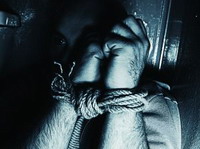Police refute rumour about serial killer in Wisconsin
Since 1997 eight college-aged men have turned up dead in one of Wisconsin's rivers.

Each death, rekindled talk of a serial killer who lurks in the bars, waiting to drown good-looking young men.
But FBI profilers and other investigators have now all reached the same conclusion: The deaths were accidents.
With no murderous stalker to blame, people will have to take responsibility for what happens when they get drunk, said Paula Knutson, dean of students at University of Wisconsin-La Crosse.
"The report will help students," she said. "There was doubt in their mind, which removed a sense of accountability. ... This helps say 'OK, we've got a problem here when it comes to excessive drinking."'
The city of 50,000 lies on the Mississippi River about two hours southeast of Minneapolis-St. Paul, Minnesota. About 15,000 students attend its three colleges - UW-La Crosse, Western Technical College and Viterbo University.
The love affair with beer and breweries in Wisconsin - a state whose residents largely trace their roots back to Germany - is on full display here: A set of large storage tanks at City Brewery is advertised as the world's largest six-pack, and thousands attend the annual Oktoberfest.
Every weekend students jam the downtown bars, which border Riverside Park where the Black and La Crosse rivers join the Mississippi.
The series of mysterious deaths began in July 1997, when the body of 19-year-old Richard Hlavaty was found in the Mississippi. The rumors became near hysteria in 2004 when the body of UW-La Crosse wrestler Jared Dion, 21, was found in the Mississippi off Riverside Park.
Police were heckled when they held a community meeting to assure the public the drownings were accidents. People accused them of ignoring obvious connections between the deaths - all men, all white, all disappeared downtown.
The rumors erupted again last September, when UW-La Crosse basketball player Luke Homan was found dead in the Mississippi after a night of drinking.
A month and a half later, Minneapolis police classified the drowning there of a University of Minnesota student who had vanished from a downtown bar as a murder. In December, a criminologist at Minnesota's St. Cloud State University said more than 20 college-aged men had drowned after disappearing from bars or parties since 1997 in an area from Minnesota to Ohio.
Tired of the rumors, La Crosse police asked the FBI's National Center for Analysis of Violent Crime to review their investigations, and on Aug. 21 Police Chief Ed Kondracki announced that the FBI had found no evidence to support the serial killer theory.
The chief said the report noted that eight other people who survived falls into water in the area reported no contact with anyone else, and that there had been no reports of suspicious people approaching men in the areas where the victims were last seen.
The FBI also reported that student volunteers who began patrolling the park after Homan's death encountered about 40 drunk people along the water, Kondracki said.
Kondracki did not release the report, saying it is FBI property. The FBI has not responded to an Associated Press request for a copy under the Freedom of Information Act.
Since Homan's death, city leaders have enacted a public intoxication ordinance and spent about $60,000 (44,014 EUR) on fencing in Riverside Park. A consortium of local medical centers is studying ways to reduce alcohol-related injuries. Three colleges launched a safe drinking campaign.
However, signs at Coconut Joe's still invite students to "Get Goosed Up" on $2.50 (1.83 EUR) back-to-school mixed drinks.
Bars have to offer drink specials to compete, said Dave Parisey, owner of the downtown Popcorn Tavern and president of the La Crosse City and County Tavern League. The solution, he said, is teaching kids in high school and at home about alcohol abuse.
"(Parents) can't just send their kids up here and expect us to baby-sit them," Parisey said.
La Crosse Mayor Mark Johnsrud said he considered widespread drinking at house parties a greater problem than bars' drink specials, and said many students are drunk before they ever get downtown.
"You're always going to see cheap drinks in a college town," Johnsrud said.
And not everyone believes the FBI.
Viterbo junior Tina Kothbauer, 20, of Durand, said she thinks police are squelching the serial killer theory to avoid publicity, and she does not think the safe drinking campaign will do anything.
"College students aren't going to stop binge drinking," Kothbauer said.
Subscribe to Pravda.Ru Telegram channel, Facebook, RSS!





